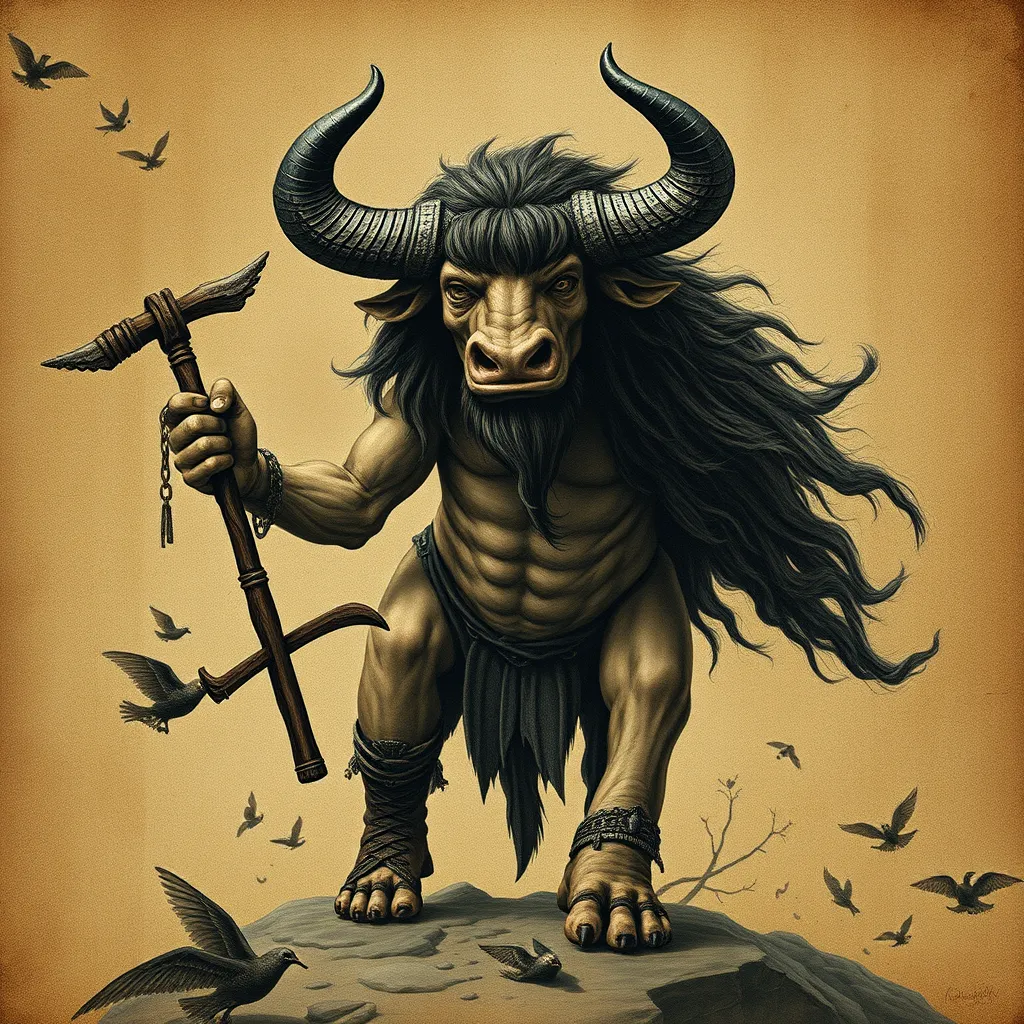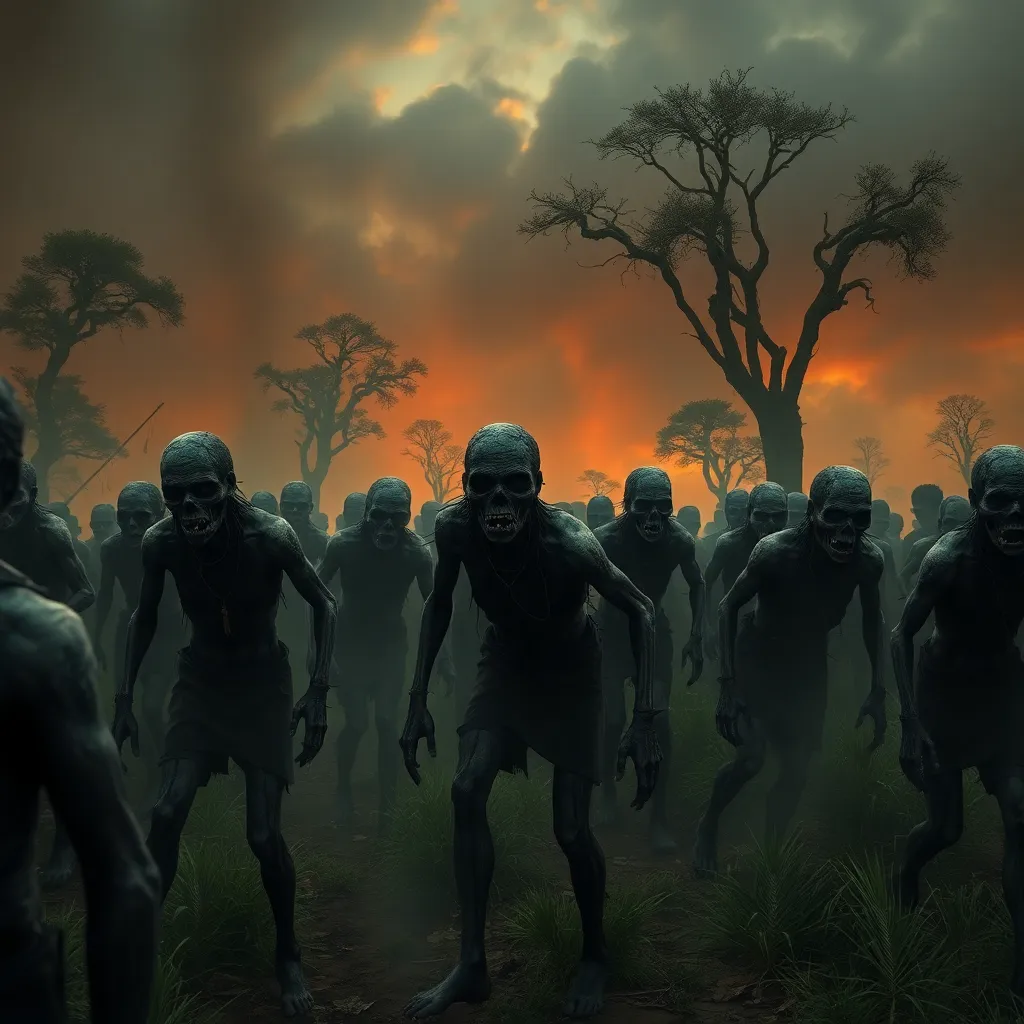From Myth to Modernity: The Minotaur in Literature, Film, and Art
I. Introduction
The Minotaur, a creature with the body of a man and the head of a bull, is one of the most enduring figures from ancient mythology. Originating from Greek mythology, the Minotaur is best known for residing within the labyrinth, a complex maze designed by Daedalus, where it was ultimately slain by the hero Theseus. This myth has captivated the imagination of countless generations, symbolizing the struggle between man and beast, as well as the confrontation with one’s inner demons.
The significance of the Minotaur extends beyond the confines of ancient stories; it reflects complex themes of identity, monstrosity, and societal fears. In this article, we will explore the evolution of the Minotaur across various mediums, including literature, film, and art, tracing its journey from myth to modernity.
II. The Origins of the Minotaur Myth
The Minotaur myth has deep historical and cultural roots within ancient Greek civilization. The creature is often associated with the island of Crete and the Minoan civilization, which thrived around 2000–1450 BCE. The tale is enriched by its key figures:
- Minos: The king of Crete, who ordered the construction of the labyrinth to imprison the Minotaur.
- Daedalus: The master craftsman who built the labyrinth and later assisted Theseus in his quest.
- Theseus: The heroic figure who eventually confronts and defeats the Minotaur, symbolizing the triumph of human reason over chaos.
The symbolism in the original myth is profound, with the Minotaur representing the darker aspects of human nature, such as violence and primal instincts. Additionally, the labyrinth itself serves as a metaphor for the complex journey of self-discovery and the challenges one must face in life.
III. The Minotaur in Classical Literature
In classical literature, the Minotaur’s story is retold and reinterpreted in various texts. Ancient authors like Ovid and Apollodorus provided detailed accounts of the myth, each adding layers of meaning and context. The Minotaur’s presence in Roman literature also emphasizes its impact, as poets and playwrights utilized the creature to explore themes of heroism, sacrifice, and the nature of evil.
The Minotaur often serves as a metaphor for human struggle and conflict. The labyrinth symbolizes the complex paths one must navigate in life, while the Minotaur itself represents the internal and external battles faced by humanity. This theme resonates through the ages, making the myth relevant to both ancient and modern audiences.
IV. The Minotaur in Modern Literature
Contemporary authors have adapted the Minotaur myth, infusing it with new interpretations and themes. The creature has been reimagined as a symbol of identity, existential angst, and the human condition. Notable works that feature the Minotaur include:
- “The Minotaur” by Peter David: A retelling that explores the creature’s perspective, presenting a more sympathetic view of the Minotaur.
- “The Invention of Morel” by Adolfo Bioy Casares: A novel that draws parallels between the Minotaur and existential questions of reality and perception.
- “The Bull from the Sea” by Mary Renault: A historical novel that revisits the Theseus myth, delving deep into its psychological implications.
These adaptations highlight the Minotaur as a symbol of personal identity struggles, reflecting modern existential themes, and the search for meaning in a chaotic world.
V. The Minotaur in Film
The Minotaur has also made a significant impact on the world of cinema, appearing in both classic and contemporary films. The representation of the Minotaur in film is varied, often reflecting societal fears and desires.
Key films that feature the Minotaur include:
- “The Labyrinth” (1986): Although primarily focused on a different kind of labyrinth, it evokes the spirit of the Minotaur through its themes of entrapment and transformation.
- “The Company of Wolves” (1984): This film intertwines werewolf and Minotaur myths, exploring the duality of human nature.
- “Minotaur” (2006): A direct adaptation that delves into the creature’s origins and its tragic existence.
These films utilize narrative techniques such as visual symbolism and character development to explore the Minotaur’s role as a reflection of societal anxieties, including the fear of the unknown and the struggle against one’s inner demons.
VI. The Minotaur in Visual Art
The Minotaur has been a subject of fascination in visual art throughout history. From ancient pottery depicting the creature to modern interpretations, artists have sought to capture its essence in various forms.
Historical depictions often portray the Minotaur in a menacing light, emphasizing its monstrous aspects. In contrast, contemporary artistic interpretations may focus on the creature’s humanity and vulnerability. Notable examples include:
- Pablo Picasso: His series of paintings featuring the Minotaur explores the creature’s dual nature, symbolizing both chaos and creativity.
- Augustus Saint-Gaudens: His sculptures capture the Minotaur’s physicality and strength, while also hinting at its tragic fate.
The role of the Minotaur in contemporary art movements often serves as a critique of modern society, exploring themes of alienation, identity, and the nature of monstrosity.
VII. The Minotaur as a Cultural Archetype
The Minotaur has transcended its mythological origins to become a cultural archetype. It influences various aspects of popular culture, including literature, film, and even fashion. The archetype of the monster, as embodied by the Minotaur, represents humanity’s fears and the struggle to confront the unknown.
Comparative analysis with other mythological creatures, such as:
- Cerberus: The three-headed dog guarding the underworld, symbolizing fear and the afterlife.
- Medusa: The gorgon with snakes for hair, representing female rage and transformation.
These creatures, like the Minotaur, serve to illustrate the complexities of human nature, societal fears, and the confrontation with the darker aspects of existence.
VIII. Conclusion
The journey of the Minotaur from myth to modernity reveals its enduring significance in cultural history. As a symbol of humanity’s inner struggles, the Minotaur continues to resonate with contemporary audiences, serving as a reminder of the complexities of identity, fear, and the nature of monstrosity.
The legacy of the Minotaur in modern literature, film, and art underscores the importance of mythological figures in cultural discourse, highlighting their ability to evolve and remain relevant in an ever-changing world. Ultimately, the Minotaur invites us to confront our own labyrinths and the beasts that dwell within.



